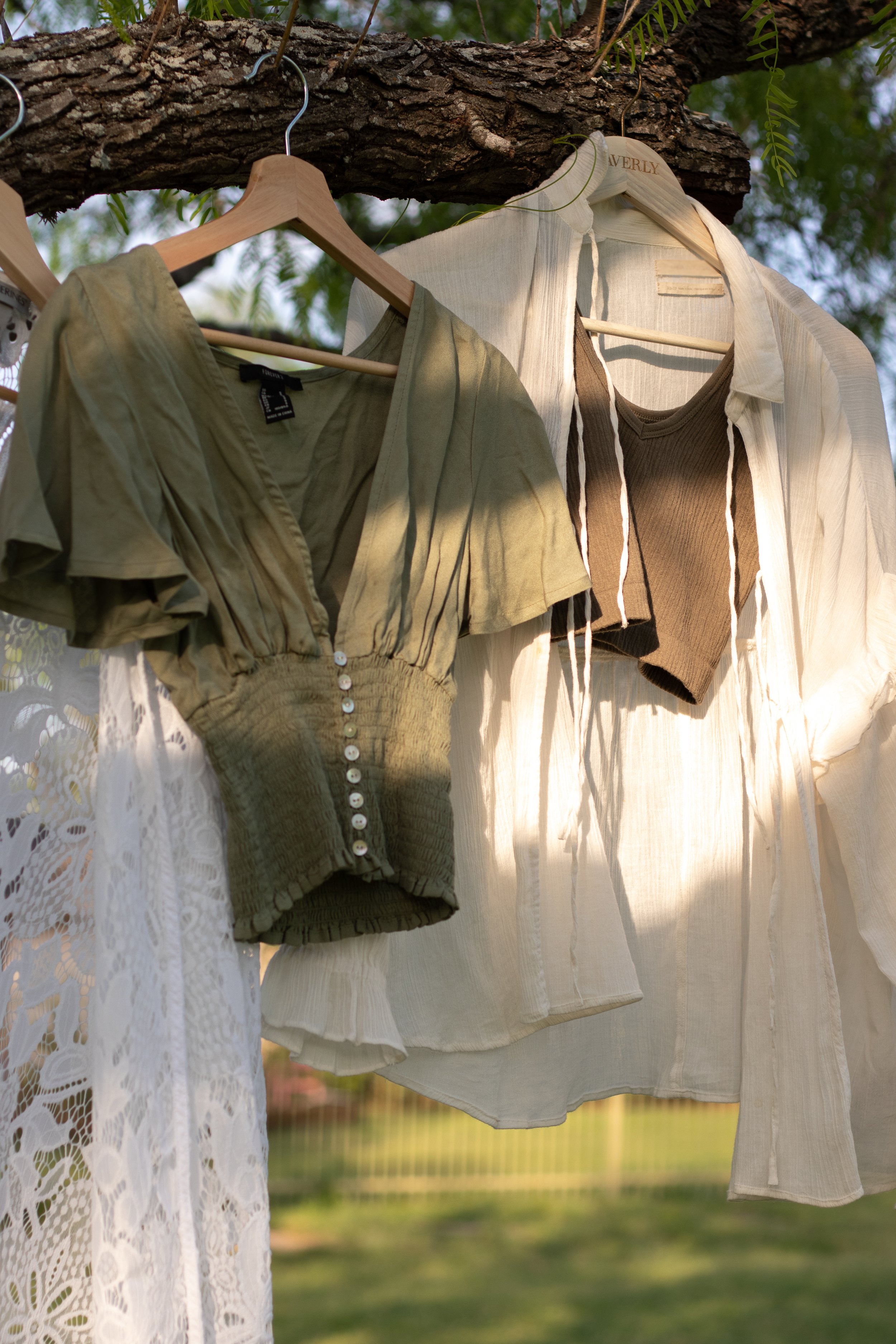Break Fashion Barriers, Not Ecosystems
The Willow Project
The environmental headline of social media in recent weeks is The Willow Project. If your TikTok feed is anything like mine, you have seen an abundance of "sign this petition," an array of videos showing icebergs melting, or clips of sick polar bears, all with “#willowproject” in the description. Yet across all the videos and in my scrolling, to no avail, I found zero explanation for what the Willow Project is. After investigating further and discovering the gravity of the project's intent, I was outraged. I also learned that my lack of knowledge on the Willow Project was a shared knowledge gap for other unknowing scrollers. So what is the Willow Project?
The project's origins go back to 2020 when the Trump administration approved the company, ConocoPhillips, plan to open five oil drilling pads on Alaska's North Slope. Despite Trump signing off on the plan, following the change of power after the 2020 election, the Biden administration attempted to redlight the project while it consulted environmental experts. Yet, after a slippery slope of legal issues between the US government and the company, the attempts to end the project were unsuccessful. Internal negotiations between Biden and ConocoPhillips were settled, and the company settled on opening only three oil pads. Even with a decrease in oil pad creations, the project will still produce an estimated 600 million barrels of oil and release 239 million metric tons of carbon dioxide into the atmosphere. The influx of carbon dioxide could heighten the effects of climate change, have detrimental effects on melting ice and rising sea levels, and could lead to the mass extinctions of animal and plant life across the globe. But there is good news. The efforts of ConocoPhillips are being tested by Earthjustice, a coalition of environmentalists, in court as they filed a lawsuit on Biden's allowance of the project. If the lawsuit is successful, the project could officially be called off, yet at the very least, it buys time for environmental groups to build a better case while halting the project.
While this explanation might trigger some doomsday alarms, it is crucial to note that it is entirely out of the public's control (at least for now). However, the issues of the Willow Project should still cause an internal reflection across the nation about what the environment means to all of us — moreover, a review of what steps we are taking to impact the environment positively. While environmental crises like the Willow Project may feel out of our control, there are still ways to positively impact the environment through consumerism and selective purchases. Fashion is one purchase category that contributes to climate change the most. Fast fashion (cheap clothing made in mass quantities) is a large part of greenhouse gas emissions and contributes up to 10% of global emissions. Buying from fast fashion brands is arguably just as bad as the Willow Project, the only difference is there is a personal responsibility in the contributions to climate change from individual purchases. There are better quality and more ethical alternatives in the fashion industry that are combating fast fashion and greenhouse gas emissions. Supporting these brands and switching from fast fashion can positively affect the environment.
The Brands
Patagonia is perhaps the staple of outdoor wear and the beloved granola girl aesthetic. Over the last 50 years, the brand has grown into a powerhouse for men's and women's wear. While many know the name, fewer know their roots in environmental activism and their eco-friendly "worn wear" program. Patagonia famously imposed a 1% earth tax on their business which they then contribute back into the environment through coalition donations for environmental groups or by supporting ecological activists. Additionally, they have ways to connect their customers with local coalitions or events to physically help the environment or aid in the legislative process to protect the earth. They also support a worn-wear program, where you can resell Patagonia clothes back to the brand, and then they sell them (at a reduced price) to customers as a way to offset their carbon emissions from production. Regarding carbon, Patagonia is committed to reducing its carbon/greenhouse gas emissions and has made promises to be carbon neutral by 2025. A radical idea in itself, the brand has already made great strides in its goal as its worn-wear program has already killed 30% of its carbon emissions.
So for your next outdoor purchase or when you want to channel your inner granola girl, consider buying from Patagonia. A brand committed to protecting our earth is a brand worth investing in.
Like some brands on this list, PACT features men's, women's, and kid's wear. Additionally, the brand has become quite well-known for its home goods and bath line. As for fashion, the brand highlights lively colors and vibrant patterns. They also have several collections ranging from flare features to coastal wear to a ribbed collection. PACT's sustainability lies in its production and fabric sourcing primarily. As a carbon-neutral brand, PACT uses organic farming to cut back on 81% of conventional farming water consumption on average. They have saved 160 million gallons of water compared to the average traditional farming brand. They also offset their carbon emissions through reforestation efforts across the globe. But unique to PACT is their fair trade commitment. The brand has supported workers worldwide by funneling one million dollars into factories to provide safe conditions for workers, support networks, and on-site development funds for their employees.
A brand the people, environment, and workers love is a brand that deserves support. Keep PACT on the list for bright spring and summer-inspired wear this upcoming fashion season!
Tentree is definitely in the more neutral/basic fashion category, which is perfect for any season or occasion. They have selections for men, women, and kids and an accessory line. Tentree has prided itself on being carbon neutral since 2020. But more so, the brand's most well-known eco-friendly is their commitment to plant ten trees for every purchase. Over the past ten years, they have planted 85 million trees. These trees are crucial to climate change as they help store and reduce carbon emissions in the atmosphere. They are also leaders in the industry for using raw materials like cotton and wool to air in decreasing production emissions. But their vision goes beyond production. Like many brands featured in this line-up, they have a recycling program called Circularity. They resell clothing in good condition and break down the natural fibers of pieces that cannot be resold.
When it comes to building a capsule wardrobe or hunting for basics or neutrals, Tentree can help you and the earth.
Founded in 2009, this brand is known for timeless yet trendy everyday wear for women. The brand features clothing, shoes, jewelry, and wedding wear as a catch-all for any fashion occasion. As one of the few brands that are already carbon neutral, that is just the beginning for Reformation. They have upped the ante by aiming to achieve the title of "climate positive" by the year 2025. Climate positive is environmental jargon meaning that the brand hopes to offset more carbon than they produce. A bold ambition, Reformation has confidence that their new and changing fabric sourcing will help them achieve their goal. They have also taken on a recycling project where any clothing item purchased can be sent back to the company, where they break down the fabric into usable fibers to create new clothing. This reduces the amount of "virgin material" used, thus aiding in offsetting carbon during and after production.
From workday outfits to going out nights, weddings, summer dresses, and so much more, Reformation is a great clothing option that you and the environment will love!
Written by Leah Lara, Photographer: Lisa Nguyen, Social Media: Karla Trevino



